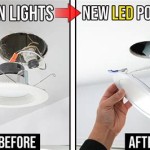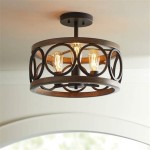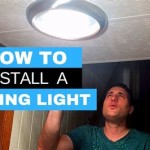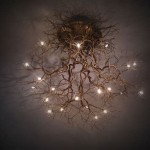Essential Aspects of Ceiling Downlight Design
Ceiling downlights, ubiquitous in contemporary lighting design, offer a myriad of advantages, including energy efficiency, versatility, and aesthetic appeal. Understanding the essential aspects of ceiling downlight design is crucial for architects, interior designers, and homeowners alike to create spaces that are both functional and visually pleasing.
This article delves into the fundamental elements of ceiling downlight design, exploring their impact on lighting effectiveness, aesthetic harmony, and overall ambiance. By considering these aspects, design professionals can elevate their lighting schemes, creating spaces that are both practical and inspiring.
Light Output and Beam Angle
The light output, measured in lumens, determines the brightness of a downlight. The beam angle, measured in degrees, affects the spread of light. A wide beam angle creates a broader, diffused light distribution, suitable for general illumination, while a narrow beam angle produces a concentrated spotlight effect, ideal for accentuating specific areas.
Color Temperature and Color Rendering
Color temperature influences the warmth or coolness of the emitted light. Warm light (2700K-3500K) evokes a cozy and inviting atmosphere, while cool light (5000K-6500K) promotes alertness and focus. Color rendering index (CRI) measures a light source's ability to accurately render colors. High CRI values (above 80) are crucial for retail and art galleries, ensuring faithful color reproduction.
Recessed Depth and Trim Design
The recessed depth affects how much of the downlight is visible from below the ceiling. A shallower depth creates a more discreet look, blending seamlessly with the ceiling, while a deeper depth allows for more pronounced trim designs, adding a decorative touch to the space.
Shape and Size
Downlights come in a variety of shapes, from circular to square to rectangular. The shape can complement the architectural style and overall aesthetic of the space. The size should be proportional to the ceiling height and the size of the room, ensuring balanced illumination.
Mounting and Installation
Ceiling downlights can be mounted in various ways, including surface-mounted, recessed, and semi-recessed. The mounting method determines the ease of installation and the overall appearance of the downlight. Recessed downlights, for example, require a cut-out in the ceiling, while surface-mounted downlights are affixed directly to the ceiling surface.
Conclusion
The essential aspects of ceiling downlight design, from light output to mounting options, are fundamental to creating effective and aesthetically pleasing lighting schemes. By carefully considering each of these elements, design professionals can harness the transformative power of downlighting, enhancing the functionality, ambiance, and overall aesthetic appeal of any space.

Designing With Led Downlights Tips And Ideas For Modern Interiors Simple Lighting Blog

42 Light Led Ceiling 128cm Cer Design Chandeliers Metal Nordic Style Living Room Lights 110 120v 220 240v Tomax Lighting

Oaning 17 7 In 1 Light Black Square Shape Geometric Design Selectable Led Semi Flush Mount Ceiling With Remote Hg Hcxlst 4666 The Home Depot

Oaning 20 In 4 Light Colorful Vintage Flush Mount Ceiling Fixture With Design Lampshade Hcx Am 39 Us The Home Depot

42 Light Led Ceiling 128cm Cer Design Chandeliers Metal Nordic Style Living Room Lights 110 120v 220 240v Tomax Lighting

45 Ceiling Lights Ideas For Home Office

Oaning 24 4 In 1 Light Modern Flower Design White Dimmable Selectable Led Flush Mount Ceiling With Remote Jzuck5k3nshcx The Home Depot

Unique False Ceiling Light Ideas To Brighten Your Bedroom

9 Types Of False Ceiling Light Designs To Glam Up Your Home

Factory Direct Modern Diamond Shape Design White Indoor Flash Rgb 3000 6500k Interior Lighting Led Ceiling Light China Made In Com
Related Posts








